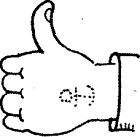Нина Пусенкова - Английский язык. Практический курс для решения бизнес-задач

Все авторские права соблюдены. Напишите нам, если Вы не согласны.
Описание книги "Английский язык. Практический курс для решения бизнес-задач"
Описание и краткое содержание "Английский язык. Практический курс для решения бизнес-задач" читать бесплатно онлайн.
Задача данного издания – познакомить учащихся с современной финансово-экономической терминологией. Первая часть книги в большей мере посвящена вопросам управления, вторая – финансовой проблематике. Темы занятий в основном соответствуют тематике курсов, которые преподаются в большинстве школ бизнеса. Уроки содержат тексты из самых разнообразных профессиональных источников и упражнения, позволяющие студентам закрепить пройденный материал. В конце учебника приводится словарь необходимой лексики примерно из 1000 слов и выражений.
Для студентов бизнес-школ, языковых, финансовых и экономических вузов, а также для всех, кто хотел бы усовершенствовать свой деловой и финансовый английский.
In defining your marketing mix it is also necessary to take into account your competitor’s mix as well as your overall corporate objectives. The idea is to come up with a mix that will clearly differentiate your products from those of your competitors while considering your corporate goals. For example, the mission of your company may be to offer a high-end luxury product since your competitors are addressing the mass market and this is consistent with your company’s goal of owning the market for top-of-the-line products of this category.
Product
What is it that you are selling? A good marketing manager will be particularly interested in knowing what «need» it addresses? Engineers would think in terms of its functional specifications and marketing people would think more in terms of its features and benefits. Manufacturing people will be thinking about how to make it and along with the accounting group they will be wondering what it costs to make (or buy). Hopefully, they won’t be wondering and will defer instead to rigorous analysis.
Denny Doyle, consultant and founder of Digital Equipment Canada, always told me that the product is what you trade for cash. In other words, your customers want your product and you want their cash and all you do in business is trade those two items.
Price
What is price? The answer may not be as obvious as one may think. Price is not just the sticker price or the price invoiced. It goes deeper. For example, what about terms? Can you have 30 days to pay for a purchase or as we often hear on radio commercials for household furniture, «nothing down, no interest, low monthly payments starting next year!»? A good example of clever pricing was Xerox’s decision to «loan» customers the Xerox 914 and to charge them only $.05 per copy.
As a product moves through the distribution channels, e.g. from manufacturer to distributor to dealer to customer, there are prices set along the way. The manufacturer’s selling price to the distributor becomes the distributor’s cost. Obviously, it is important to understand pricing and margins along the distribution path. Ultimately, the price to the consumer must be competitive. Who sets this price? Does the manufacturer or the dealer have the final say? Can the manufacturer in any way control the price of his product when it hits the street? Most importantly, can the manufacturer make (or sub-contract) the product for a cost to him that allows him to meet his profit objectives given the retail price target?
How do you price a very innovative, one-of-a-kind product? Are you pricing too low and leaving money on the table? Are you pricing yourself out of the market? Presently, there is strong demand for Harley-Davidson motorcycles and delivery times are running over six months. Since only the Harley company makes a Harley, should it raise prices and take advantage of the strong demand? If demand for your product is lagging, should you drop price – especially if the product life cycle has peaked?
There are various pricing strategies. For example, markup pricing is the setting of a price based on one’s cost. This may be appropriate when reselling a product used in providing a service. For example, an auto mechanic may mark up her cost of auto parts by 50%. This may be a simple way for her to determine selling price and from her experience this is in line with what other mechanics are doing.
Another pricing strategy is that of market «skimming». You start with fairly high prices (especially in the absence of competition) and you lower your prices over time as you start to keep up with the demand or as competition begins to move in.
For so-called commodity products, a going-rate pricing approach is often followed. If you are selling gasoline to motorists, it would be very difficult to charge a price per liter which is noticeably different from that charged by gas stations nearby, unless you’re the only station on a 200 km stretch of desert highway.
Currency is another important aspect for technology companies to consider. Because the markets for technology-based products are usually global, you should price your products in U.S. dollars. You might even consider pricing on an FOB (Free-on-Board) Destination basis. When I was selling video terminals in Germany in the 1970s, I priced in Deutschmarks, FOB Frankfurt. This meant that I was taking more risk with respect to currency fluctuations, freight and insurance charges, but by consolidating large volumes to Frankfurt, I was able to greatly reduce air freight expenses thereby offering a competitive price to my distributors.
Place (i.e. distribution)
Placement of the product is crucial. There are often many channels, which a product can take in going from your shop to the customer. Defining a channel strategy is not simply an arbitrary matter. Bear in mind that all middlemen along the way are in partnership with you to sell something to the end-user. Therefore, your product and its other 3 Ps must be such that various resellers in your channel have their needs (e.g. margin objectives, volumes) met.
There is also the question of control. When AES Data launched the world’s first word processor in the early 1970s, it signed up the Lanier company in the USA to handle U.S. sales. However, Lanier was selling the AES product under its own label, and when Lanier decided to switch to another supplier of word processors (as competition emerged), AES had little control over its U.S. customers. To gain a foothold in the U.S. market, it had to start from the beginning in a market which it created! Even if Lanier sold the AES products under the AES name, the channel would still be owned by Lanier in that Lanier had its own loyal customer base along with sales and service offices to support this customer base.
A good practical way to determine appropriate channels for your product would be to start at the point of final purchase. Who is the final consumer or user of your product? Where does that person look when buying your type of product? Once the various channels have been identified, it is easier to determine which ones make the most sense or which ones offer the path of least resistance.
Promotion
Promotion is that term which many people confuse with the word «marketing». But promotion is just one of the four Ps and a good «marketer» is not just a good promoter but also a good planner and a good listener.
Promotion can take many forms: advertising in various media, events, press releases, trade shows, brochures, flyers, and Internet sites to name a few. Promotion means creating awareness although awareness is just the beginning. Good promotion compels the buyer to buy. The «need» for the product must be addressed. How does it solve the customer’s needs (even needs he doesn’t know he has)?
There is virtually no limit on the amount of TV, radio, and newspaper advertising that one can do. When Apple announced the Macintosh in 1984, it used «shocking» television advertisement that was aired during the American Super Bowl broadcast. What an audience! What an impact! And then it was followed up with an inundation of print advertising as well as focused trade publications and trade shows. Of course, this also resulted in extensive «free» media coverage because of the news worthiness of this innovation.
Promotion is done with the purpose of not only creating demand, but building brand awareness. The challenge is to come up with another «kleenex» or «coke» or «Tamagochi».
Source: www.sfu.ca, Business Basics for Engineers by Mike Volker
Essential Vocabulary
1. forecast n – прогноз
forecast v – прогнозировать
2. sales revenues – выручка от продаж
3. distribution channel – канал распределения
4. pricing n – ценообразование
5. adjustment n – корректировка
adjust v – корректировать
6. advertising budget – бюджет на рекламу
7. salesperson (salesman) n – сбытовик, специалист по продажам
8. marketing mix – маркетинговая смесь
9. variable n – переменная (величина)
10. retail outlet – точка розничной торговли
11. high-end a – дорогой, высокого класса
12. top-of-the-line product – товар высшей категории
13. invoice n – счет-фактура
invoice v – выставлять счет-фактуру
14. loan n – заем
15. charge n – цена, плата, денежный сбор; расход, издержки; налог, комиссия за услуги; нагрузка; руководство, ответственность; обвинение, нападение
charge v – нагружать; пропитывать; поручать, вверять, приказывать; обвинять; назначать цену, запрашивать цену; записывать в долг, относить на счет, дебетовать; атаковать
16. selling price – продажная цена
17. lag n – отставание, запаздывание
lag v – отставать, запаздывать
lagging a – отстающий
18. advantage n – преимущество
19. life cycle – жизненный цикл
20. markup pricing – ценообразование с надбавкой к себестоимости товара
21. «skimming» prices – цены, «снимающие сливки»
22. commodity products – товары (чаще всего сырьевые)
23. going-rate pricing – ценообразование с учетом текущего уровня цен
24.Free-on-Board (FOB) – «франко-борт судна» (ФОБ)
25. currency fluctuations – валютные колебания
26. freight n – фрахт, груз
freight v – фрахтовать, грузить
27. middleman n – посредник
28. emerge v – появляться, проявляться, возникать
29. customer (client) base – клиентская база
30. final (end) consumer – конечный потребитель
31. awareness n – знание, осознание, осведомленность
(to be) aware (of) pass – осознавать, отдавать себе отчет
32. coverage n – охват, прикрытие; освещение (событий); общая сумма риска, покрытая страхованием
cover n – покрытие; гарантийный фонд; страхование; чехол, переплет; убежище, укрытие; покров, личина
cover v – покрывать, прикрывать, скрывать, обеспечить покрытие; покрывать убытки; страховать; предусматривать; проехать; освещать
Exercise 1. Answer the following questions.
1. What is the difference between marketing and selling? 2. What should a company do to develop a forecast of sales revenues? 3. What independent variables are included in the marketing mix? 4. What main challenge do you face when you develop the marketing mix? 5. How do different categories of professionals perceive a product of their company? 6. What are the most common pricing strategies? 7. How do companies identify distribution channels? 8. What is the difference between promotion and marketing?
Exercise 2. Read and translate the text. Find Russian equivalents for different terms used to describe price. Make sentences of your own with each term.
Price is probably the most flexible variable in the marketing mix. Marketers can usually adjust their prices more easily and more quickly than they can change any other marketing mix variable. To a buyer, price is the value placed on what is exchanged. Something of value – usually purchasing power – is exchanged for satisfaction or utility. Purchasing power depends on a buyer’s income, credit and wealth. It is a mistake to believe that price is always money paid or some other financial consideration. In fact, trading of products – barter – is the oldest form of exchange. Money may or may not be involved.
Price is expressed in different terms for different exchanges. For instance, automobile insurance companies charge a premium for protection from the cost of injuries or repairs stemming from an automobile accident. An officer who stops you for speeding writes a ticket that requires you to pay a fine. If a lawyer defends you, a fee is charged, and if you use a railway or taxi, a fare is charged. A toll is charged for the use of bridges or turnpikes. Oil companies pay pipeline tariffs for oil transportation, and households pay electricity and gas tariffs.
Rent is paid for the use of equipment or an apartment. A commission is remitted to an agent for the sale of real estate. Dues are paid for membership in a club or group. A deposit is made to hold or lay away merchandise. A tip helps pay waitresses or waiters for their services. Interest is charged for the loan that you obtain, and taxes are paid for government services. Scientists are paid honorariums for research papers they write, and authors of bestsellers are paid royalties by their publishers. The value of many products is called price. Although price may be expressed in many different ways, it is important to remember that the purpose of this concept is to quantify and express the value of the items in the market exchange.
Подписывайтесь на наши страницы в социальных сетях.
Будьте в курсе последних книжных новинок, комментируйте, обсуждайте. Мы ждём Вас!
Похожие книги на "Английский язык. Практический курс для решения бизнес-задач"
Книги похожие на "Английский язык. Практический курс для решения бизнес-задач" читать онлайн или скачать бесплатно полные версии.
Мы рекомендуем Вам зарегистрироваться либо войти на сайт под своим именем.
Отзывы о "Нина Пусенкова - Английский язык. Практический курс для решения бизнес-задач"
Отзывы читателей о книге "Английский язык. Практический курс для решения бизнес-задач", комментарии и мнения людей о произведении.






















